There are a few essentials for living on a boat that will make it feel more like home (and less like camping).
When we first moved onto our 35-foot sailboat, it took a while to feel settled in. We grappled with downsizing, finding ways to store food without a fridge, and learning how to conserve water.
Over the years (and with much experimentation) we gradually developed systems that made living on a boat more comfortable and enjoyable. So, I thought I’d share some of the systems and gear that helped us transition to the liveaboard life.
Waterborne is reader-supported. When you buy through links on our site, we may earn an affiliate commission.
1. Climate control

Unlike houses or apartments, most boats don’t come with built-in air conditioning or heating, and installing these systems can be an expensive undertaking.
Fortunately, liveaboards and cruisers have come up with all kinds of creative and low-cost ways to make their boats more comfortable.
Cool climates
People often think of winter as the hardest time to live on a boat because it can be cold and damp. But it doesn’t have to be this way!
Once we’d fixed the leaks, and found ways to manage heat and humidity, our sailboat felt like a cozy little cabin in the middle of the city.
When we lived aboard at a marina in the Pacific Northwest a single space heater kept our boat warm and toasty through the winter months.
When we started living at anchor, we used a Fab-all diesel marine stove. Fab-all doesn’t seem to exist any longer, but Dickinson marine diesel heaters are popular (and still in production).
In addition to adding heating systems, many of our liveaboard neighbors went to great efforts to insulate their boats.
Warm climates
Air conditioning requires a lot of power, which either means living at the dock (where you have access to shore power) or having a very large battery bank and generator.
Most cruisers we knew, didn’t have air conditioning on their boats. In all our travels throughout Mexico, the South Pacific, and Australia, we never needed it.
We spent most of our time at anchor where we had a breeze to keep us cool. You can also use a breeze booster or wind scoop to funnel cool air into your cabin.
There was one time when we really were desperate for air conditioning.
We had hauled the boat out of the water in Guaymas, Mexico to replace the keel bolts and the temperatures were reaching 100 F.
So, we bought a small used air conditioner, the kind that goes in a window, and attached it to our companionway. It was a wonderful reprieve after a hot sweaty day of toiling in the boat yard.
If you’re keeping your boat on land (where you won’t have water cooling the hull) or even in a marina where there’s not a lot of moving air, air conditioning can be a real lifesaver.
Humidity
High humidity is a constant battle when living on a boat. If you don’t stay on top of it, you’ll end up with mildew and a musty-smelling living space.
On our boat, we ran an electric dehumidifier (when we lived at a marina) and had four refillable dehumidifiers in various corners of the boat.
We also kept silica gel packs (the little white packets that come in packaging) stuffed in drawers containing electronics or anything we didn’t want to get damp.
We used a digital hygrometer to keep track of the humidity levels on our boat, They’re easy to use and very affordable. Ideally, you want to keep your living space under 60% RH
Refillable dehumidifiers
Inexpensive and effective, we used refillable dehumidifiers and packs of moisture-absorbing pellets in various corners of our boat. These are a great way to dehumidify if you’re not connected to shore power.
I also love the look of these hanging dehumidifiers which would be great in hanging lockers to prevent musty-smelling and mildew-stained clothing and foul-weather gear.
2. Access to potable water
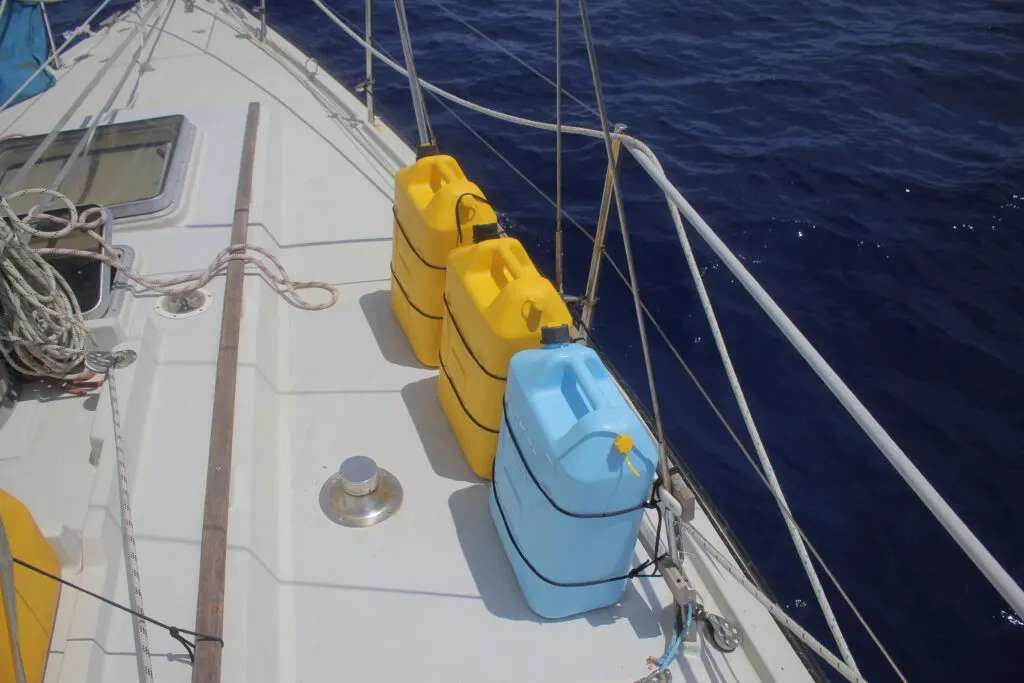
When we lived at a marina we had access to the dock water supply. Once a week we’d get out a garden hose and fill our tanks.
Later, when we began cruising full-time, we’d either fill up our water tanks at a fuel dock or haul water by hand in blue jugs. It took us a couple hours every week to refill our tanks by hand.
With less readily available water, we began experimenting with low-tech water-making methods and ways to conserve water.
Eventually, we got tired of lugging water jugs around and invested in a watermaker, which could turn salt water into fresh water, whenever we wanted. It wasn’t cheap but it completely transformed our lives aboard.
3. A good power supply
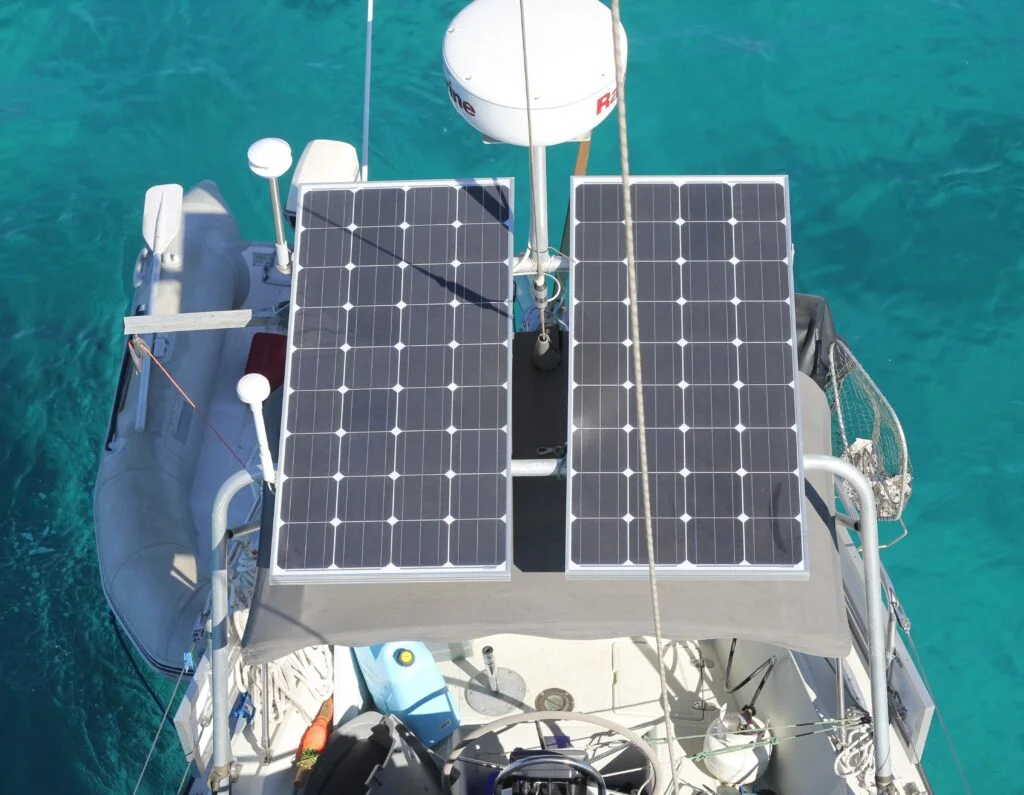
When we first moved aboard we lived at a marina and were plugged into shore power 24/7. Life was good!
Aside from replacing our shore power cable, which was in rough shape, we didn’t need to make a single electrical upgrade.
Everything changed when we cast off the dock lines for two weeks of summer vacation. We quickly learned that we didn’t have nearly enough battery capacity and no means of efficiently charging.
Every day we had to run our diesel engine for an hour or two, just to use basics like the depth sounder and chart plotter. Our phones and laptops were soon drained–there was no way we could charge our personal electronics.
We knew that we would have to make some major investments if we were going to live off-grid, away from the marina.
We decided to completely overhaul our boat’s electrics. Over the course of a year, we:
- Doubled our house battery capacity to 230 amp hours.
- Replaced our 30 amp alternator with a 60 amp high-output alternator so that our batteries would charge more quickly while running our engine.
- Installed a Kisae marine battery charger/inverter
- Built a solar arch and installed a 200-watt solar array
Suffice it to say, that overhauling your electrical system is a big project.
If you’re going to do it yourself, I HIGHLY recommend taking Boat Electrics 101, a marine electrical course co-created by marine systems guru, Nigel Calder. The course teaches you everything from the basics of how electricity works to how to completely rewire your boat.
4. On-and-off the water transportation
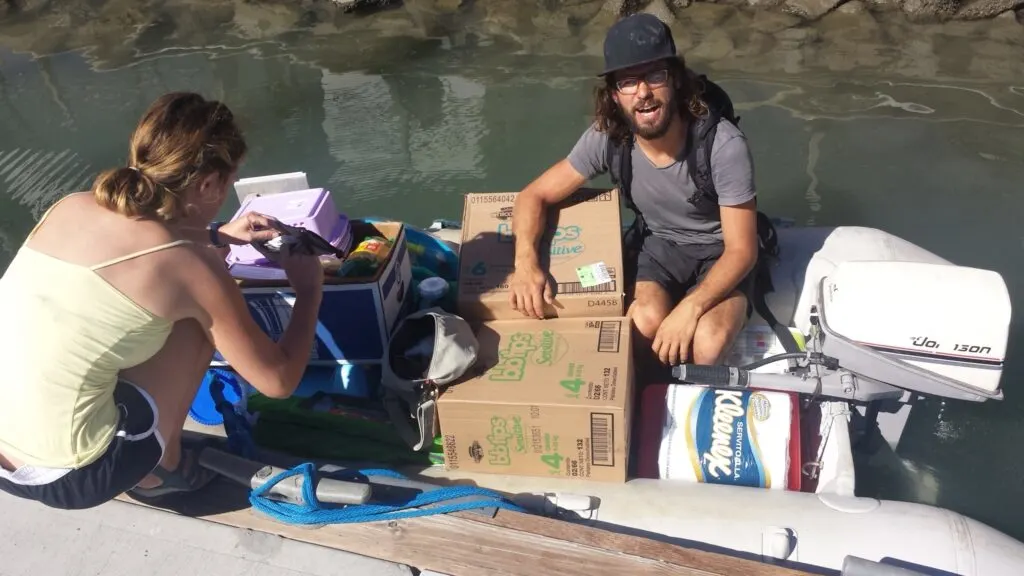
Simple errands like going to the grocery store or picking up laundry, take on new levels of logistical complexity when you live on a boat. Just imagine trying to pile a Costco shop into an inflatable dinghy!
If you’re living at anchor, you’ll want to invest in a reliable dingy and probably a second mode of transportation (like an inflatable paddle board) if you’ve got a few people living aboard.
Folding bikes can be wonderful for getting around. We used them while cruising in Canada and the United States. However, they do take up space on deck and we ultimately sold our folding bikes when we got to Mexico because we found the road conditions too rough to use them.
A waterproof bag
Whether you’re commuting to work or the gym, a waterproof bag is an absolute must. Dry bags are essential for dinghy trips as there’s a good chance of being splashed or dropping something overboard.
Dock steps
When you’re getting on and off your boat multiple times a day you’ll immediately notice the difference a dock step makes. They’re especially helpful when you’re carrying groceries and don’t have a free hand to pull yourself up onto the boat.
We initially didn’t see the point in dock steps (after all we were young and nimble) but we decided to build one based on the advice of other liveaboards (and I’m glad we did).
We made our dock step out of dimensional lumber and plywood then painted it with outdoor paint and walnut shells (for a non-slip texture).
You can also buy dock steps in varying sizes.
Collapsible cart
Collapsible wagons are very popular with cruisers and liveaboards. If you’ve got a long walk from your car to the marina or if you live at anchor these carts are fantastic for hauling groceries, laundry, and jugs of water.
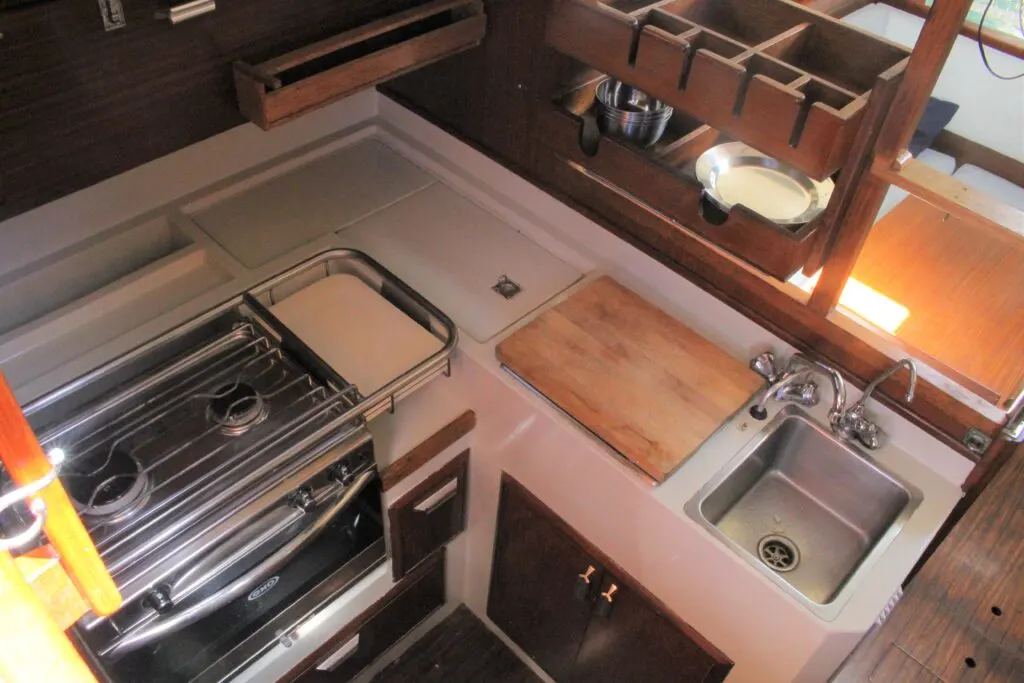
5. Galley helpers
It was challenging adjusting to a kitchen without a microwave, toaster, or fridge. However, we eventually developed new systems and meal plans to suit our tiny space.
In addition to buying unbreakable glasses, stackable dishware, and a stove-top pressure cooker, we managed to squeeze a couple of appliances aboard.
Immersion blender
Appliances use precious power and take up space on a boat.
The only kitchen appliance we kept onboard was a small immersion blender. They’re great for blending salad dressings, whipping cream, or pulverizing soup.
12V cooler
Our boat didn’t have a fridge (only an icebox). So, while we were living on the dock we experimented with various alternatives including a small freezer stored on the dock (a great addition if your marina allows it!), a bar fridge stowed under our chart table, and a DC-powered cooler. All of these worked well. The key is finding one that fits in your space and is easy to access.
6. Pint-sized cleaning supplies
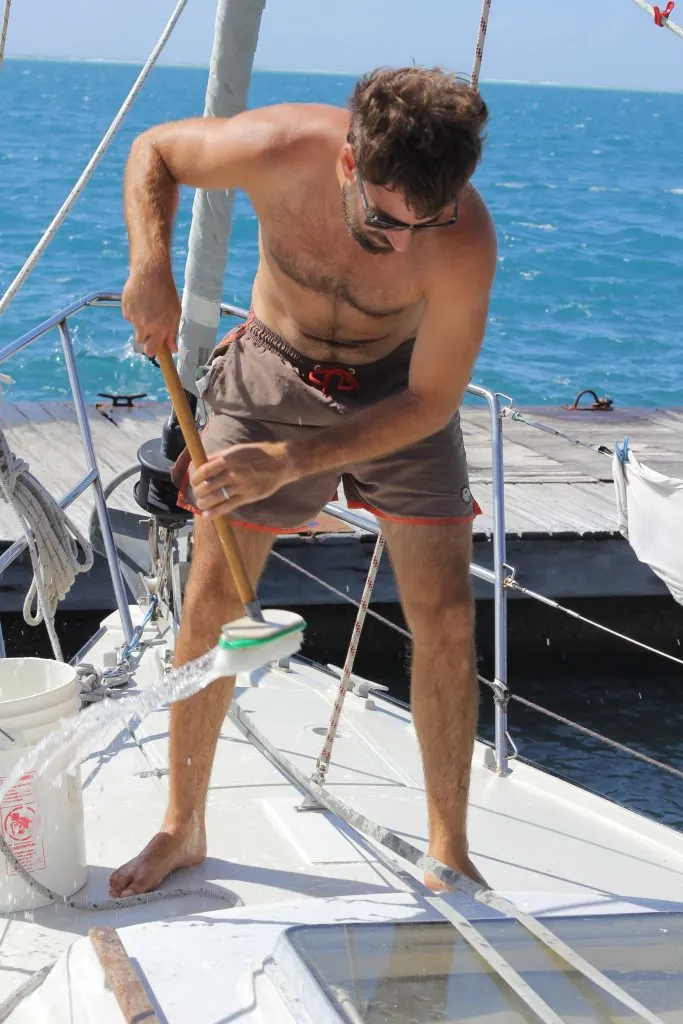
One of the great benefits of living in a small space is that there’s less cleaning to do! That being said salt, sand, and boat grime need to be attended to. Here are some pieces of gear that make cleaning easy and don’t take up too much space.
Shop-vac
Our portable wet/dry Shop-vac worked double duty. It was great for general household cleaning and we also used it for sucking up the dust from our boat projects. Its compact size made it easy to stow under our settee.
Collapsible cleaning bucket
I found this collapsible bucket handy for cleaning and it took up almost no space under our sink.
7. Boat bathing options
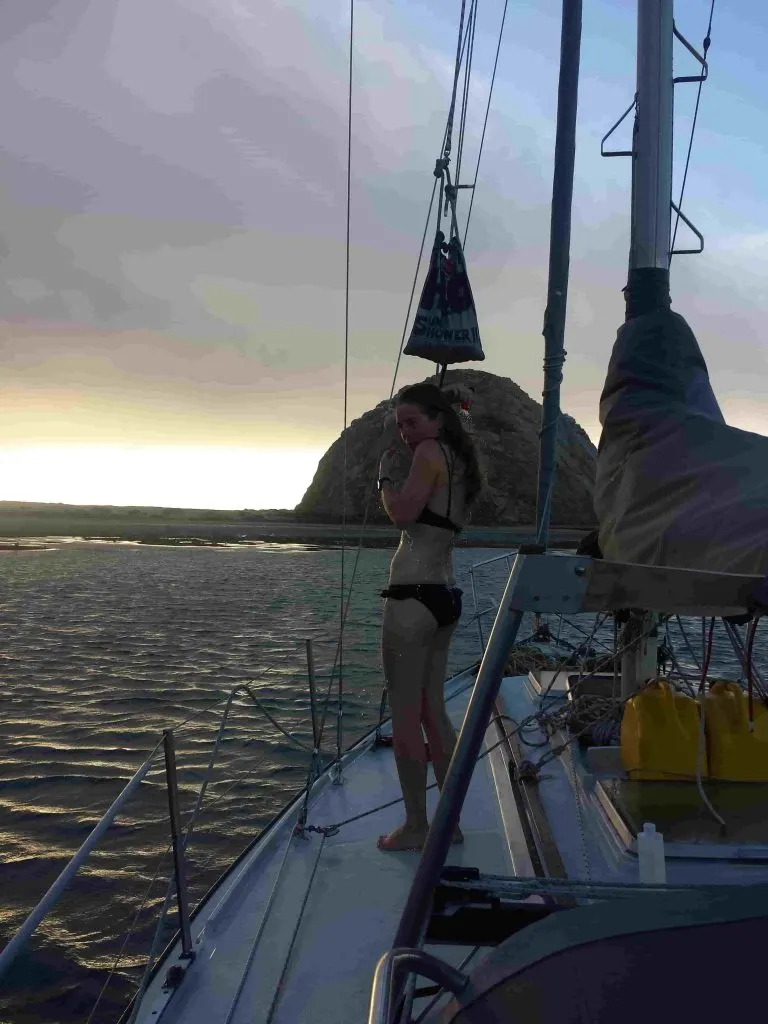
The thing I missed most while living on a boat was a bathtub! While bathing may never be as luxurious as it is on land, there are still plenty of ways to pamper yourself on a boat.
Shower caddy
At our liveaboard marina, some people walked the dock in their bathrobes on their way to the showers. They also carried shower caddies with all their ablutions. I was never quite brave enough to pull off the bathrobe look, but a caddy is very useful!
Microfiber towel
Boats are damp and humid environments where cotton towels can take forever to dry. Microfiber towels were our go-to while living on a boat for five years. They also pack down and take up almost no space.
9. Sleep aids
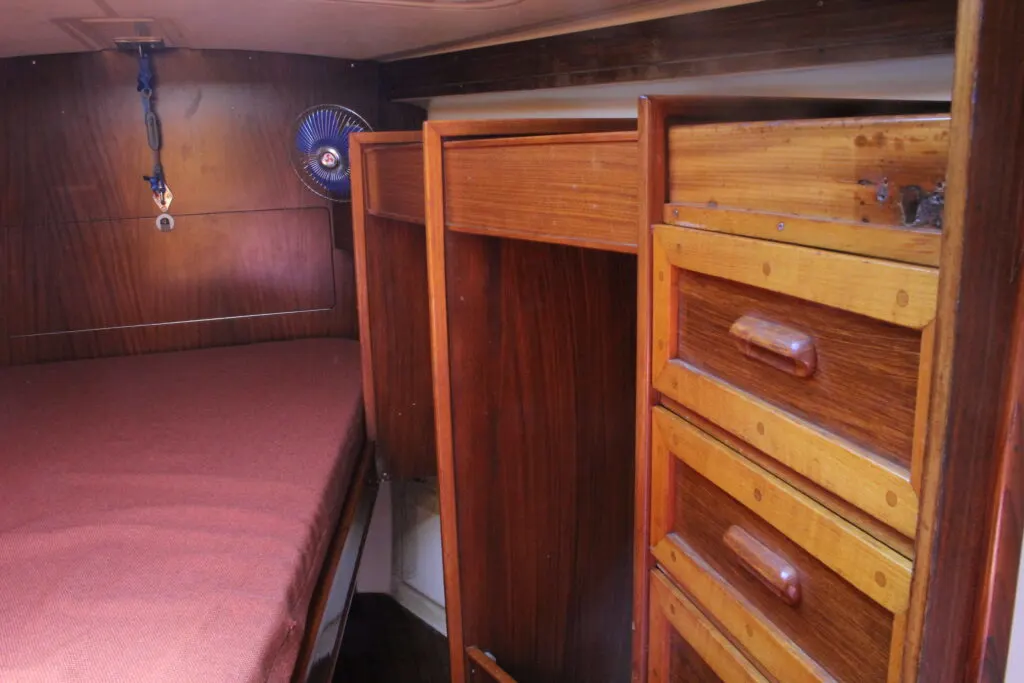
You might be surprised to find that those high-thread count cotton sheets that felt so luxurious in a house, feel damp and clammy on a boat.
Buy a hydrophobic option like 100% polyester. If you have a v-berth, quarter berth, or non-standard-sized bed, you may want to spend a few extra bucks on custom-fitted boat sheets.
Also, be aware that condensation will collect under your mattress. Many liveaboards swear by the Hypervent mattress pad, which supposedly keeps moisture at bay.
Robin and I would simply prop up our mattress every morning with a piece of 2×4 to let it dry out (on the plus side we didn’t have to make our bed!).
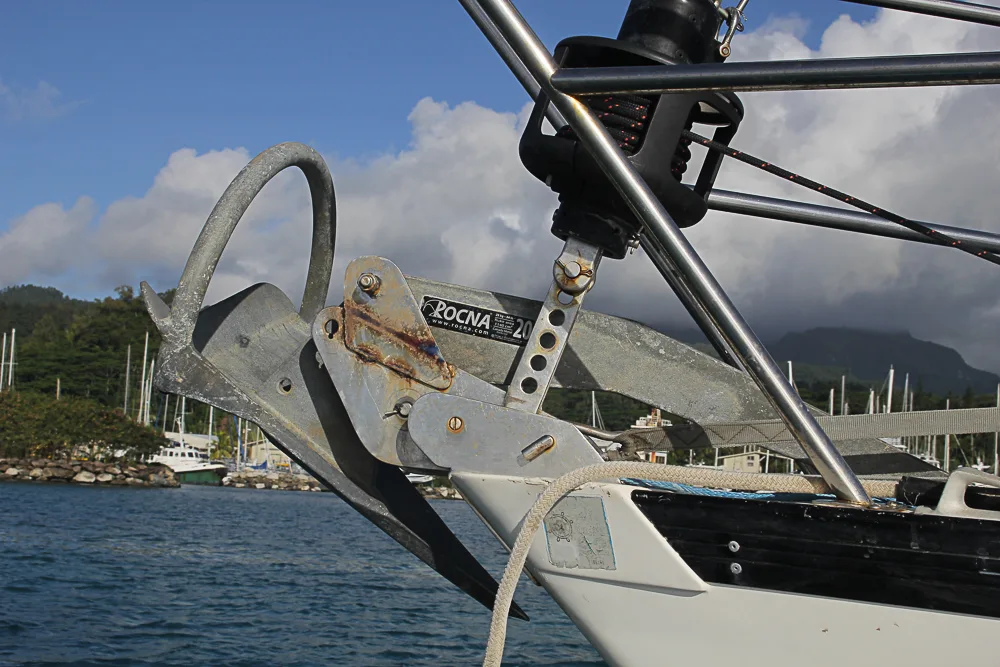
One thing that helped us sleep at night was having a robust anchoring set up. We decided to buy the best anchoring system we could afford (a Rocna plus 150 feet of 5/16 high test chain).
While not inexpensive, I can’t say enough good things about our Rocna anchor. We didn’t drag once over a 3-year, 13,000 nautical miles sailing trip.
10. Electronic devices

If you’re connected to shore power or run an inverter onboard, you’ll be able to use many of the electronics you’d enjoyed on land.
- A pair of wireless headphones can really help give you a sense of personal space if you live aboard with another person.
- If you’re a big reader, a Kindle is a great space saver.
- A dedicated external hard drive is great for sharing movies, books, and resources with other sailors. Cruisers have developed a culture of exchanging hard drives (because fast internet can be so hard to come by).
Headlamp
Boats have lots of dark corners and small spaces. A headlamp can be very helpful for finding things. We kept ours hung by the companionway at all times.
Be sure to choose a waterproof headlamp with a red light to help preserve your night vision on night watch.
Waterproof Bluetooth speaker
This item is more fun than “essential” but we love that it doesn’t take up much space and packs a ton of sound for its size.
11. Outdoor storage
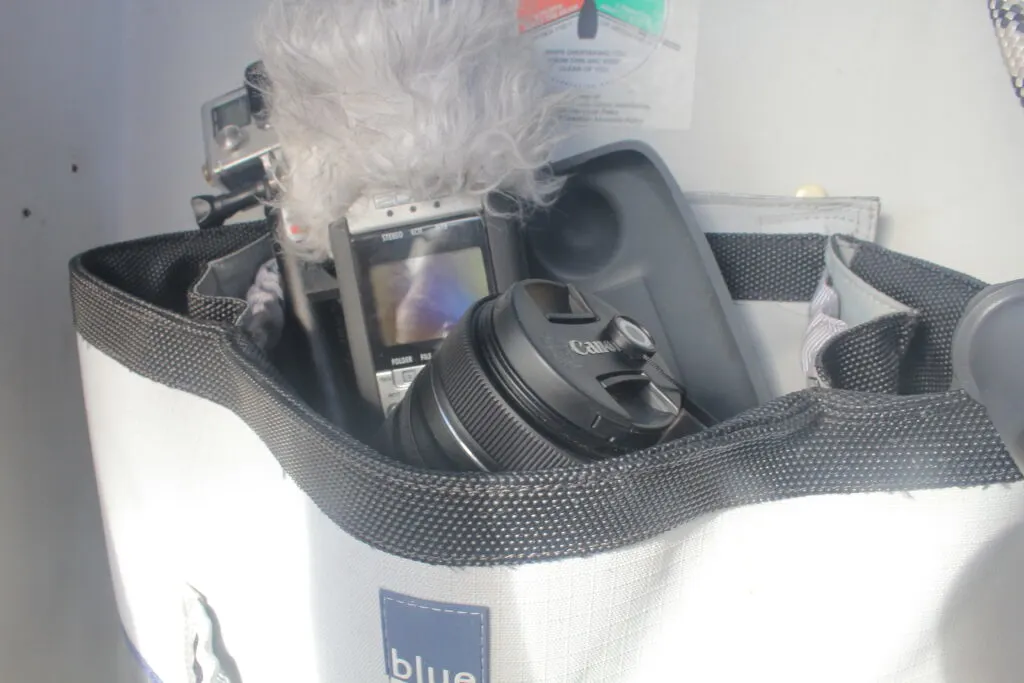
One of the best ways to expand your onboard living space is to make use of your cockpit. Many liveaboards have custom-made canvas dodgers, biminis, and full enclosures. The first significant investment we made in our boat was a new dodger, bimini, and bridge panel.
Even just covering your cockpit with an inexpensive tarp will go a long way. Not only does it provide a protected place to hang out but it can also function as a covered entryway where you can keep boots, a cooler, and extra storage.
If you’re going to be spending time in your cockpit you’ll probably want to find something comfortable to sit on. You can have cushions custom-made, or buy lounge chair cushions at the hardware store (they won’t be a perfect fit but they’re much more affordable).
Dock box
A dock bock can be a wonderful way to expand your storage space. Choose one with stainless steel latches and hinges so they don’t rust.
Boom tent
Many liveaboards rig boom tents using tarps, bungees, and rope. These not only give you more living space but also help protect the boat from rain and sun.
Good luck! The transition to boat life can be tricky to navigate, but with the right tools and systems, we hope you’ll come to love living on a boat as much as we did.
Fiona McGlynn is an award-winning boating writer who created Waterborne as a place to learn about living aboard and traveling the world by sailboat. She has written for boating magazines including BoatUS, SAIL, Cruising World, and Good Old Boat. She’s also a contributing editor at Good Old Boat and BoatUS Magazine. In 2017, Fiona and her husband completed a 3-year, 13,000-mile voyage from Vancouver to Mexico to Australia on their 35-foot sailboat.














